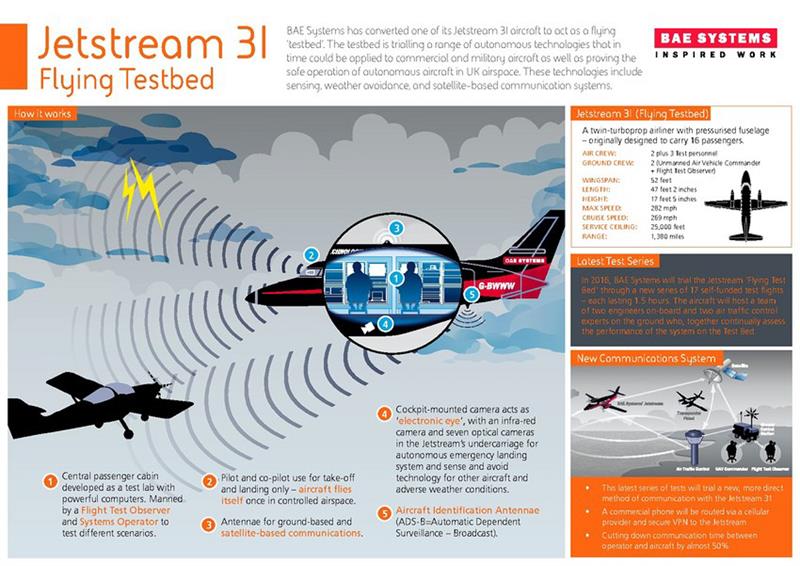BAE Systems in funding the trials at a cost of around £400,000 with plans to build on the findings of the ASTRAEA (Autonomous Systems Technology Related Airborne Evaluation and Assessment) Research and Development programme which ran from 2008-2013.
In a series of 17 flights, BAE Systems’ engineers aim to prove the capability, maturity and safe operation of autonomous air technologies controlled by a satellite-communications based link.This has the advantage of being globally available already, enabling operations without the need for new infrastructure.
Maureen McCue, BAE Systems’ head of research and technology for the military aircraft and information business, said: “The trials are an exciting time and will give us technology options that could be applied to our own manned and unmanned aircraft as well as potentially enabling us to take some new unmanned aircraft technologies to market.”
Also being tested are further developments of sensing technologies including aircraft and cloud avoidance using only camera input rather than radar. The results of the trials will inform the direction of the Company’s future unmanned aircraft programme and the suitability of testing unmanned aircraft in the UK. In the near future these unmanned aircraft technologies may also be brought to market for use in commercial and military aircraft as aids to the existing crew
The series of test flights involve a team of two engineers on-board whom, together with air traffic control experts at NATS, continually assess the performance of the systems on the testbed. Flights will last one and a half hours through non-congested airspace and will cover around 300 miles at 15000 feet. The pilot and co-pilot are in control for take-off and landing, but once airborne and in controlled airspace the Jetstream flies itself. On the ground a flight test observer and an unmanned air vehicle commander will monitor the flights via satellite communications.
The testbed contains an aircraft identification antenna which detects other aircraft’s transponder signals as well as a cockpit mounted camera acting as an ‘electronic eye’. This links to the aircraft’s computer systems and enables the Jetstream to ‘see’ potential hazards even if no signals are being emitted. The electronic eye of the Jetstream can also recognise different cloud types and, if needed, plot a course that allows evasive action from challenging weather conditions.
Alastair Muir, director, Prestwick, NATS, said: “We are very pleased to have supported our BAE Systems colleagues in this trial using aircraft operations of this scale and are currently working with the rest of the industry to agree how this exciting technology can be fully realised and integrated safely with conventional aviation.”

For more information download this infographic by clicking on the link below.









